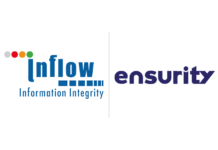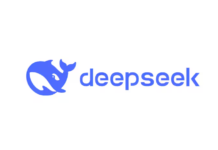The oil and gas industry, which has historically been seen as being primarily focused on engineering, is progressively utilizing Al and generative Al (GenAl) to improve efficiency and improve operations through immediate data and insights. Al tools are being merged across the value chain, from upstream exploration and production to midstream storage and downstream refining and distribution. This represents a significant change in an industry that was formerly controlled by a traditional engineering perspective.
Al is being used by businesses for many different purposes, including locating potential exploration locations, underground engineering through the analysis of seismic data, reservoir modeling, fluid flow prediction, and drilling extraction rate optimization.
The technology is also playing a critical role in logistics control for supply chain management, scheduled upkeep of critical assets like turbines, pumps, and pipelines, and refining process optimization to increase safety and productivity. Al is also improving operational efficiency in crude trading.
For example, Al-powered process digital twins of gas and offshore facilities are being used by Cairn, Vedanta’s oil and gas division, to reduce flaring by approximately 30% and optimize fuel gas by 18%, the company told. In order to maintain oil production levels and minimize equipment downtime, such as hydraulic rod pumps, it has implemented artificial intelligence (AI) and machine learning (ML). Al/ML analysis of sensors and Internet of Things (loT) data assesses the probability of such machines breaking, and real-time insights and smart alerts assist in warning.
“These machines are in oilfields in, for instance, remote parts of Rajasthan. If they fail, it takes significant time for a person to travel and make it right, and there would be a significant decline in volume,” explained Sandeep Gupta, chief digital and information officer, Cairn Oil and Gas.
The company has built an Al model using historical procurement and consumption data to forecast the optimal future quantity of spare parts procurement needs, minimizing existing spare parts, reducing non-moving inventory, and overall working capital. At one field site, savings of about $1.5 million could directly be attributable to this solution, Gupta said.
“The biggest problem the oil and gas industry faces is emissions. It is under tremendous pressure to change its portfolio, but even if they cannot change it completely, doing it as efficiently as possible to minimize emissions will be quite significant,” said Anish De, global head, energy, natural resources & chemicals, at KPMG.
Al, with its data analytics insights and actionability, will play a major role in enabling hyper-efficiency. And if companies do it right, this will also have a positive bottom-line impact, De said.
“You’re seeing massive efficiencies, particularly in the upstream segment, much of it because of new technologies like AI, and in areas where there’s a net saving,” De explained.
For example, even a 2% reduction in heat loss in a petrochemical facility can have a major positive effect on profitability.
In a different example, Indian Oil Corporation (IOC) is employing historical lessons from significant projects over the previous 20 years to analyze project delay compendiums using GenAl. In addition, it features a chatbot for HR tasks, GenAl solutions for legal law queries, and consumer sentiment research and visualization.
GenAl assists the international trade department, which conducts oil import talks, with finding prices and email summarization.
Manish Grover, executive director (strategic IS & 1S), refineries HQ, at Indian Oil Corporation, said, “We have AI initiatives towards yield optimization and maximization. AI can tell us what is required to be produced—if there is X rate in the market, then which is the yield that will give me the maximum profit at that point in time?”
Grover added that since 85–90% of the crude is imported—the company’s largest capital expenditure—an Al-powered integrated planning tool for supply chain management has improved the evaluation of crude oil, short- and long-term planning, and business decision-making. Evaluation done well is therefore essential. Al is also used to keep an eye on, streamline, and prevent potential harm in IOC’s shipping procedures.
“Whenever data is being created, we are using the power of AI to give us more insights and decision-making tools,” Grover said. “Over the last five years, OT (operational technology) and IT have been integrated to enable this.”
In order to increase energy efficiency, 1OC has implemented supply-side optimization through data on supply-side utility costs and consumption monitoring, as well as captive power plant dashboards and optimization at their refineries. Additionally, energy management systems have been developed for end-to-end utilities.
“Ultimately, when I’m investing crores in projects and they don’t come in time, I’m losing money; I’m losing productivity out there,” Grover said. “All these solutions together let me monitor my projects better; maybe take those preventive steps so that the projects are coming on time.”
The Asia-Pacific region is predicted to contribute 38% of the projected 16.17% growth in the global Al in oil and gas industry by 2028, according to research from Teamlease Digital. India’s share of the APAC will be greater than 50%.
“The sector being a continuous process sector, live monitoring and control take priority, leading to emerging technologies taking center stage to reduce process time and error rates,” said Munira Loliwala, vice president, strategy and growth, at Teamlease Digital.
According to Loliwala, organizations can see a 20% improvement in operational costs and a 40% boost in data accuracy using Al. Additionally, the industry is witnessing improvements in establishing a paperless environment of up to 50%. Al also helps refinery firms achieve important quality requirements. Production professionals can actively make changes to save waste, guarantee regular manufacturing reliability, and promote environmental sustainability by anticipating any deviations in product quality before they arise, according to Loliwala.
Experts stated that increasing the green line’s efficiency makes strategic business sense.
According to IT giant Accenture, Al and GenAl can contribute to a topline improvement of 1-2.5%, a cost reduction of 2-3%, and a capital spend decrease of 3-6% throughout the value chain.
“Emerging product substitutes, increasing regulatory and environmental requirements, new entrants from the diversified ecosystem, and changing consumer preferences are necessitating the need for a radical change,” said Hari Shankaranarayanan, managing director and lead-energy, Accenture in India.
According to experts, GenAl bots are widely used in corporate tasks, such as personnel administration, fundamental claims-related issues, and legal difficulties. These functions are particularly substantial in oil and gas enterprises. According to PWC partner Deepak Mahurkar, GenAl can serve as “non-human eyes” for contract monitoring and reporting.
According to him, businesses in the subsurface, above surface, retail, gas, liquefaction, and other sectors are prioritizing lowering manual intervention in processes and increasing agility.
“Business expansion and increasing revenue through lateral expansion, forward and backward integrations—this is an aspiration of oil and gas companies,” Mahurkar said.
For instance, oil tankers today are highly sensorized, and Al helps detect and flag any anomalies in transportation. The technology can process data for as many as 50,000 trucks every second. Al helps tailor customer experiences, as proximity sensors at retail outlets can alert fuel stations of nearby customers, and registered customers can be flashed advertisements or fuel rates, Mahurkar said.
Although use cases are still being developed, Mahurkar stated that businesses are considering their alternatives carefully and are willing to invest funds in their development.
According to Loliwala of Teamlease Digital, the majority of organizations spend up to 20% of their budget on Al development, which helps them to digitally change their businesses.
The AI job market is expected to grow by 20% this year. For example, the number of positions holding full stack Al scientist and machine learning engineer increased by 44% and 100%, respectively, in Q1 of 2024 compared to Q1 of the previous year.
In the next two to three years, certain IT centers may double in size, according to Loliwala. De of KPMG noted that, in contrast to Al/ML, GenAI is still in its infancy in the oil and gas industry.
Also read: Strengthening the prospects of data center industry with quality air solutions
Do Follow: CIO News LinkedIn Account | CIO News Facebook | CIO News Youtube | CIO News Twitter
About us:
CIO News is the premier platform dedicated to delivering the latest news, updates, and insights from the CIO industry. As a trusted source in the technology and IT sector, we provide a comprehensive resource for executives and professionals seeking to stay informed and ahead of the curve. With a focus on cutting-edge developments and trends, CIO News serves as your go-to destination for staying abreast of the rapidly evolving landscape of technology and IT. Founded in June 2020, CIO News has rapidly evolved with ambitious growth plans to expand globally, targeting markets in the Middle East & Africa, ASEAN, USA, and the UK.
CIO News is a proprietary of Mercadeo Multiventures Pvt Ltd.






